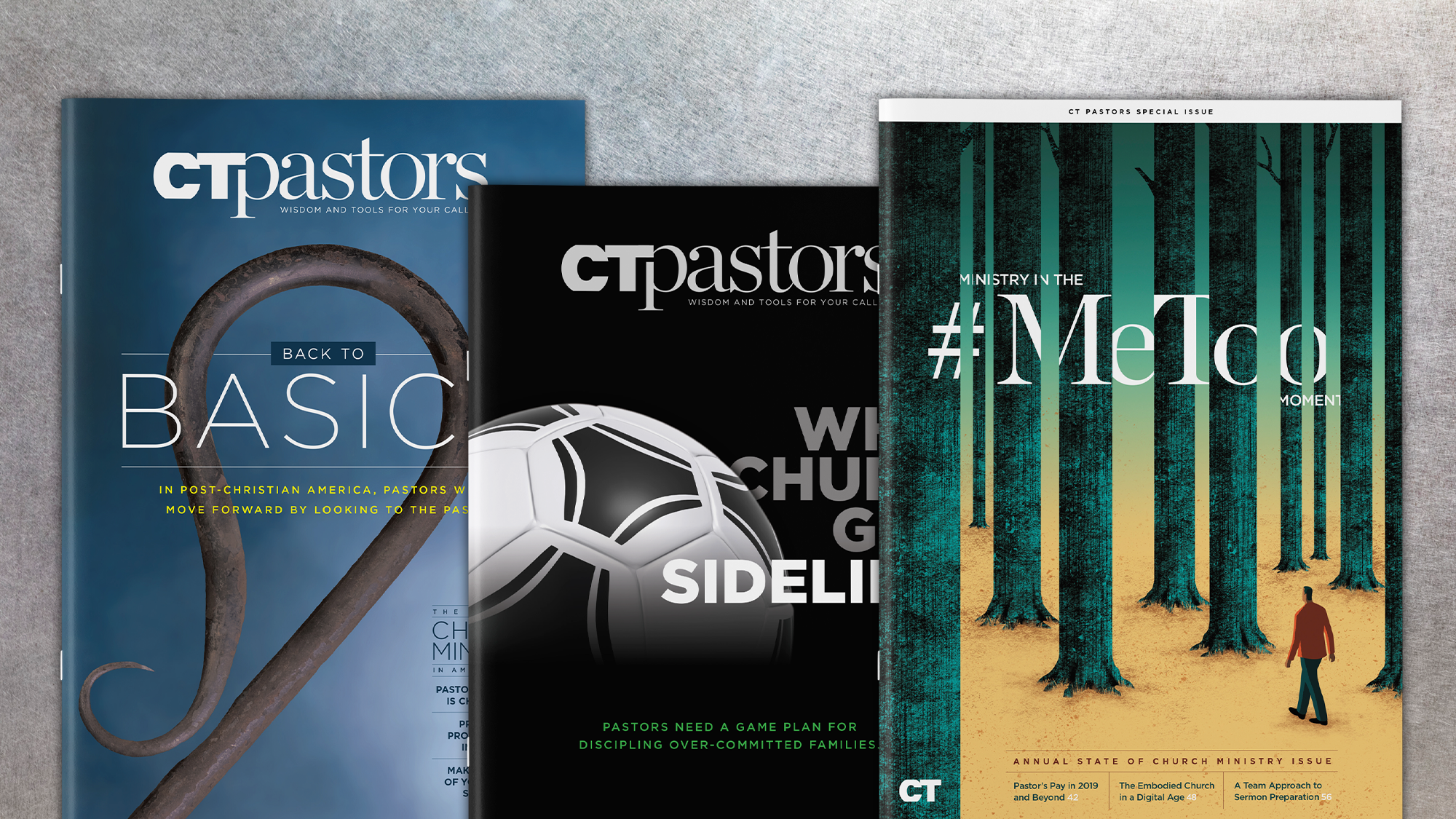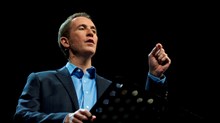
The cure for dullness in the pulpit is not brilliance but reality.
P. T. Forsyth
The common people are captivated more readily by comparisons and examples than by difficult and subtle disputations. They would rather see a well-drawn picture than a well-written book.
Martin Luther
In preaching, the best time to hook a congregation is at the outset. The moment is ripe. Catch it, and thoughts travel with you; lose it, and minds dim like lights in a brownout.
To begin a sermon with spark is half the battle. And a well-chosen illustration can ignite that spark. Sometimes the illustrations practically write themselves. Those are the blessed Sundays. Other times, the dread monster, Sermon Block, rears its ugly head, scaring away any great beginnings—or even mediocre ones for that matter—and we wonder if we can get anything across before the congregation signals one by one that the lights are on but no one's home.
When he was pastor of Grace Chapel in Lexington, Massachusetts, Gordon MacDonald saw a desperate skunk that provided the perfect illustration for his sermon one Sunday.
I was driving to church when I first saw the skunk in the middle of Grant Street, a quiet thoroughfare in my hometown of Lexington, Massachusetts. Skunks are a common sight in the early morning hours, but this one was different. It was violently careening back and forth from one curb to the other, blinded and crazed by what seemed to be a box jammed over its head.
I looked closer. The skunk had apparently raided someone's garbage can during the night, found a cocoa box with a few grains of chocolate in the bottom, and decided to pursue what refreshment remained. But greed had gotten the best of the animal when it stuck its nose far inside, and now the box had become a self-made prison.
This strange encounter with the skunk happened early on a beautiful Sunday morning, the sort of day that makes New Englanders glad they didn't relocate in Florida. If I felt a bit groggy that morning, it was because I'd struggled through one of those sleepless nights experienced by all preachers who aren't quite sure the Sunday morning sermon has jelled enough to be confidently delivered to a discriminating congregation.
Although I felt confident that I had something substantial and biblical to say, I was alarmed about the introduction. The fact was that it hardly existed. I had been unable to develop one that made sense. It was a preacher's version of "writer's block."
My fear was based on years of preaching experience, which have taught me that some sort of "key" is needed to open the doors of people's hearts. You can't simply stand up and say, "This is what I have on my mind today," and then expect anyone to be overwhelmed with curiosity.
That "key" can take many forms: a startling question, a humorous comment, the recollection of a common event, or a familiar story. Whatever key the speaker selects, it has to be provocative because it must break through all sorts of resistances set up in the minds of preoccupied, fatigued, and perhaps even bored people. That fact of preaching life was making me feel desperate that morning when I drove up Grant Street and met the skunk.
I stopped my car and spent several minutes amused at the skunk's predicament. I even entertained the notion of getting out of the car and relieving the skunk of its burden. But a smarter side of me concluded that the terrified animal might misunderstand my motive and act in the time-honored manner of all cornered skunks. As I watched from the safety of my car, he grew more exhausted and finally slowed his frantic pace, slinking off to one side of the road to ponder his untenable situation.
I drove past the skunk—on the other side of the road—and felt a faint sensation of guilt. Perhaps it was the kind of feeling that might have needled the priest and the Levite in the biblical story who, while traveling down the road to Jericho, chose to ignore a mugged man lying in a ditch. I also had my religious duties that morning, and I couldn't see how I could help the skunk anyway.
When our morning worship service began a couple of hours later, the boxed-in skunk was all but forgotten. Here I was, just 20 minutes away from presenting an important challenge to the congregation, and I didn't know yet how to seize their attention.
What made matters worse for me was that this was the first Sunday of our annual missions emphasis, and my objective in the sermon was to reaffirm our responsibility to share our faith and material resources with the poor and needy. I needed no one to remind me that when it is a matter of people and money, you had better be able to do a superior job of persuasion.
As the worship service went on, I became more and more distressed. It was uncharacteristic of me, I told myself, to be on the verge of entering the pulpit not knowing exactly how the sermon was to be launched. What had gone wrong in my preparation? Had I missed something God had wanted me to see or think through? Perhaps I'd failed to prepare the right sermon entirely.
It was during the offering when the plight of the skunk reentered my mind. What had happened to him? I wondered. And what would have happened to me if I'd tried the Good Samaritan routine?
Suddenly ideas began to converge. My imagination kicked in. Like it or not, that skunk was coming to our church. Well, in story form anyway.
A minute later I was at the pulpit. I described what I'd seen on Grant Street a few hours before. I pictured the delight the skunk must have felt when he first found the cocoa box in a garbage can—and his frustration when he tried to reach the treat inside. But the hole was narrow, unaccommodating to a skunk's mouth. As the story progressed, the congregation was hooked. Even the children were hanging on every word. Everyone picturing the skunk straining to get his tongue through the hole in the top of that cocoa box.
Then I described the unhappy result: how the skunk discovered to his horror that he and the box were suddenly inseparable. That's when I drove up—with the skunk out in the street, running amuck, desperate to free itself.
I waited for several seconds. It's the sort of self-imposed silence that makes a nervous speaker impatient. But the pause is important—listeners can let the words sink in like a soft rain until they all saw it and the laugher began. Everyone was involved—exactly what an effective introduction is supposed to do.
When the laughter ended, I went on, "You can now appreciate the fact that I was faced with a momentous moral dilemma."
You could almost see the wheels turning as they all thought through the implication of the comment. And then, an explosion of laughter; everyone got the point almost at the same time.
The "moral challenge" was obvious. They could smell a no-win situation. And that is the stuff of which humor is usually made.
I suppose they also laughed because something told each listener that there was enormous symbolism in the story. They were caused to think of even greater predicaments in which we all eventually find ourselves—similar moral challenges carrying even greater risks of involvement.
The congregation was thinking with me now. A mental key had been turned, and all of them wanted to see how the preacher was going to use it.
With an opening tale as good as that one, the rest of any sermon, if properly prepared, can move swiftly for a preacher and even the congregation. In this case, the one thing that remained was to make sure the account of the skunk was properly linked with the overarching truth.
The purpose of the sermon had been to challenge the people to understand that caring for one another and for the people of the world who are oppressed and deprived is not only necessary, but probably involves sacrifice. And it might be something that cannot be done without personal risk. "These were the sort of things that had been going in my mind when I asked myself if I shouldn't do something for that skunk on Grant Street."
But there was a final question to ask as the congregation was thinking through the potential cost and casualties involved in caring. It became time to break that tension. So I said, "Now some of you are probably wondering what happened to the skunk."
The laughter said that was exactly what they had been wondering.
"The answer is simple," I said. "I don't know. Perhaps the police came and shot it." There were groans of dismay. "Perhaps someone braver came along and attempted a rescue. And perhaps," again I paused, "the skunk is up in the woods still facing a dangerous situation."
You could tell that the congregation had become quite sympathetic, and it grieved them to think that he was dead or that he remained in trouble.
Thus I posed this final question: "Why do you and I find it relatively easy to sympathize with a poor animal in a defenseless situation yet too often ignore human beings in a similar predicament?"
The question burned into each of us. What were we to do about a world that included a lot of wounded and hurting people whose predicaments were a self-contained prison? They were the ones we had to consider rescuing with our love, our energy, our resources. We could not afford to pass them by. With that, the sermon was over.
If I'd not been able to bring that skunk to church in story form, where would that sermon have ever gone? His plight had become my main point, and because of him, people began to think about caring in a new light.
The sun was noon-high as I drove back down Grant Street after the worship services. When I reached the place where I'd met the skunk earlier in the morning, I slowed down just a bit to see if he might still be around. He wasn't.
I wonder what I would have done if he'd still been there. Would I have reciprocated the favor he paid me by coming to church in my sermon? Would I have been more caring about him the second time around? I never had a chance to find out.
Copyright ©1986 Christianity Today

Support Our Work
Subscribe to CT for less than $4.25/month

























